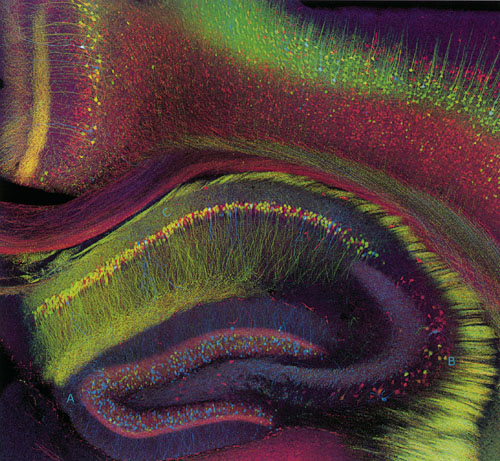
This Article From Issue
July-August 2011
Volume 99, Number 4
Page 346
DOI: 10.1511/2011.91.346
Among biologists, the neuroanatomists have always prided themselves on having a particularly refined sense of aesthetics. It’s a conceit that might be expected in a science that depends so heavily on visual perception. Carl E. Schoonover’s book, Portraits of the Mind: Visualizing the Brain from Antiquity to the 21st Century (Abrams, $35), offers a pictorial testament to the artistry and artistic sensibilities of neuroanatomists. From the magnificent pen-and-ink drawings of Santiago Ramón y Cajal to the quasi-impressionistic imagery in a cross-section of the hippocampus of a “Brainbow” mouse (shown below), Schoonover’s book presents scientific images of the brain as works of art.

From Portraits of the Mind: Visualizing the Brain from Antiquity to the 21st Century.
The book begins with three historical essays, which are followed by chapters covering different types of microscopic techniques, “electricity in the brain,” neural circuitry and brain function. It’s a beautiful idea for a book, and I wish it could have been presented in a larger format—the kind typically used for art books—to suit the sensibilities of the neuroanatomist in all of us.
American Scientist Comments and Discussion
To discuss our articles or comment on them, please share them and tag American Scientist on social media platforms. Here are links to our profiles on Twitter, Facebook, and LinkedIn.
If we re-share your post, we will moderate comments/discussion following our comments policy.